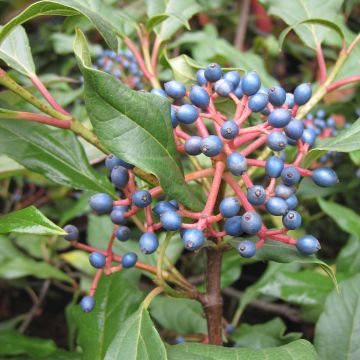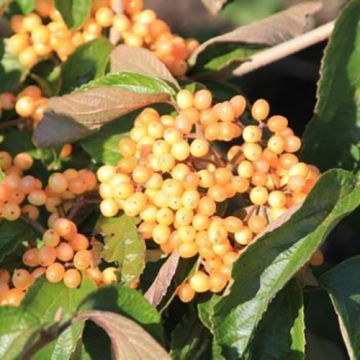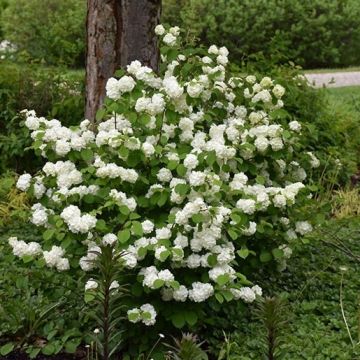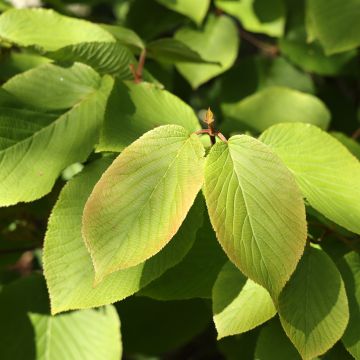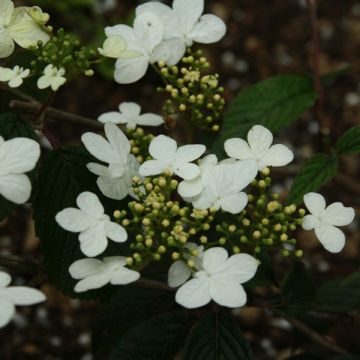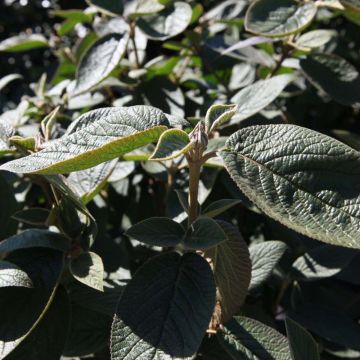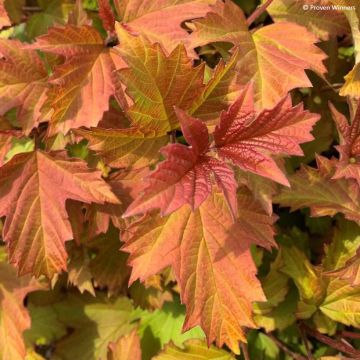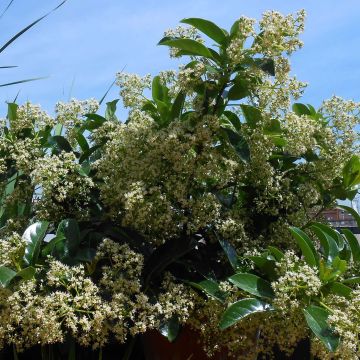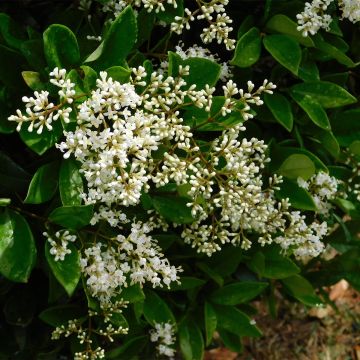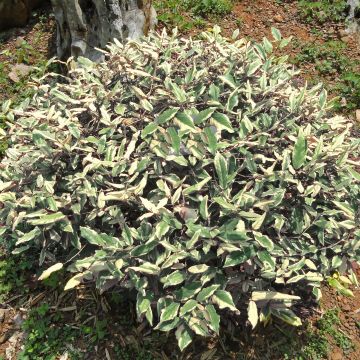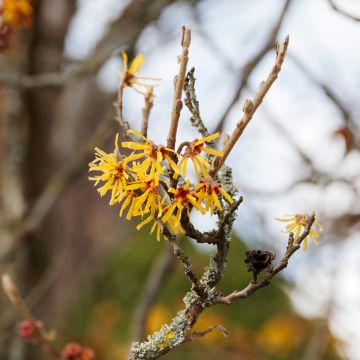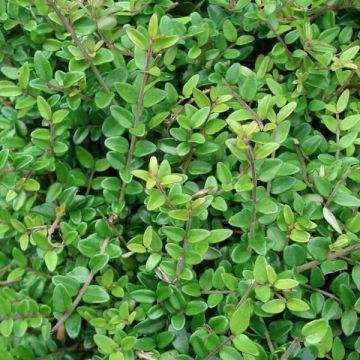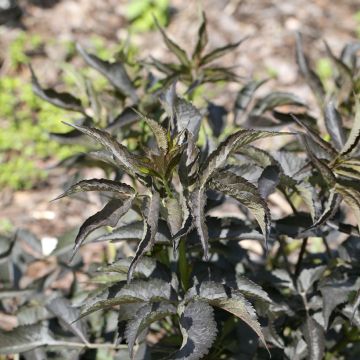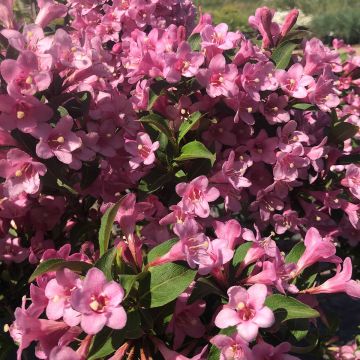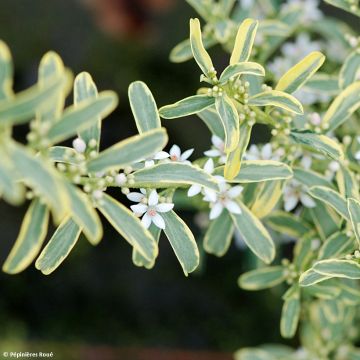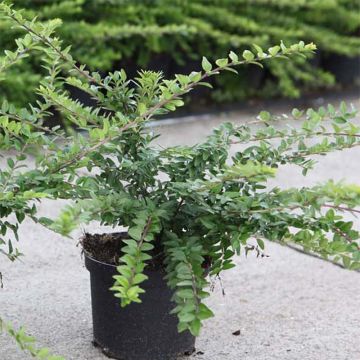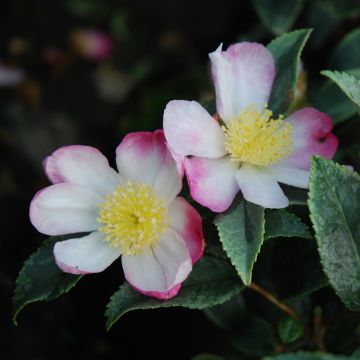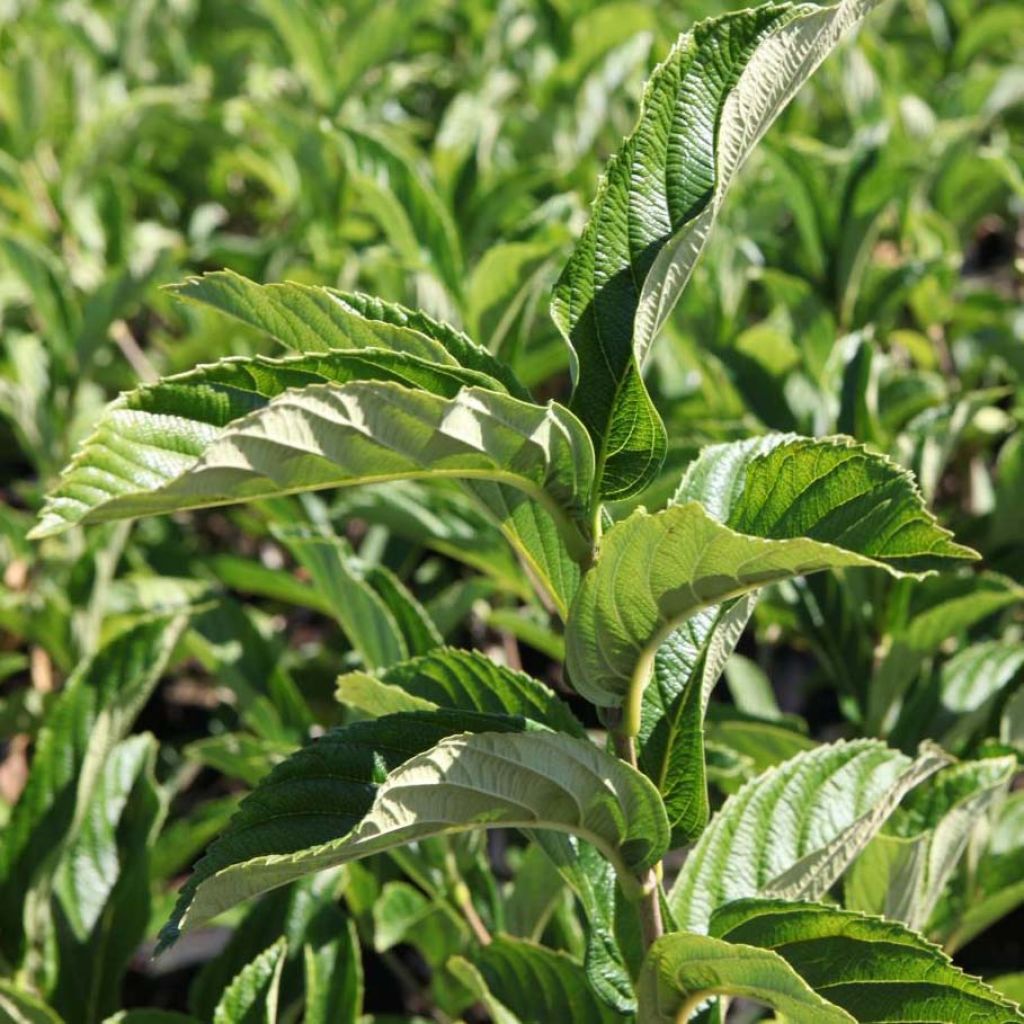

Viorne - Viburnum sieboldii Seneca
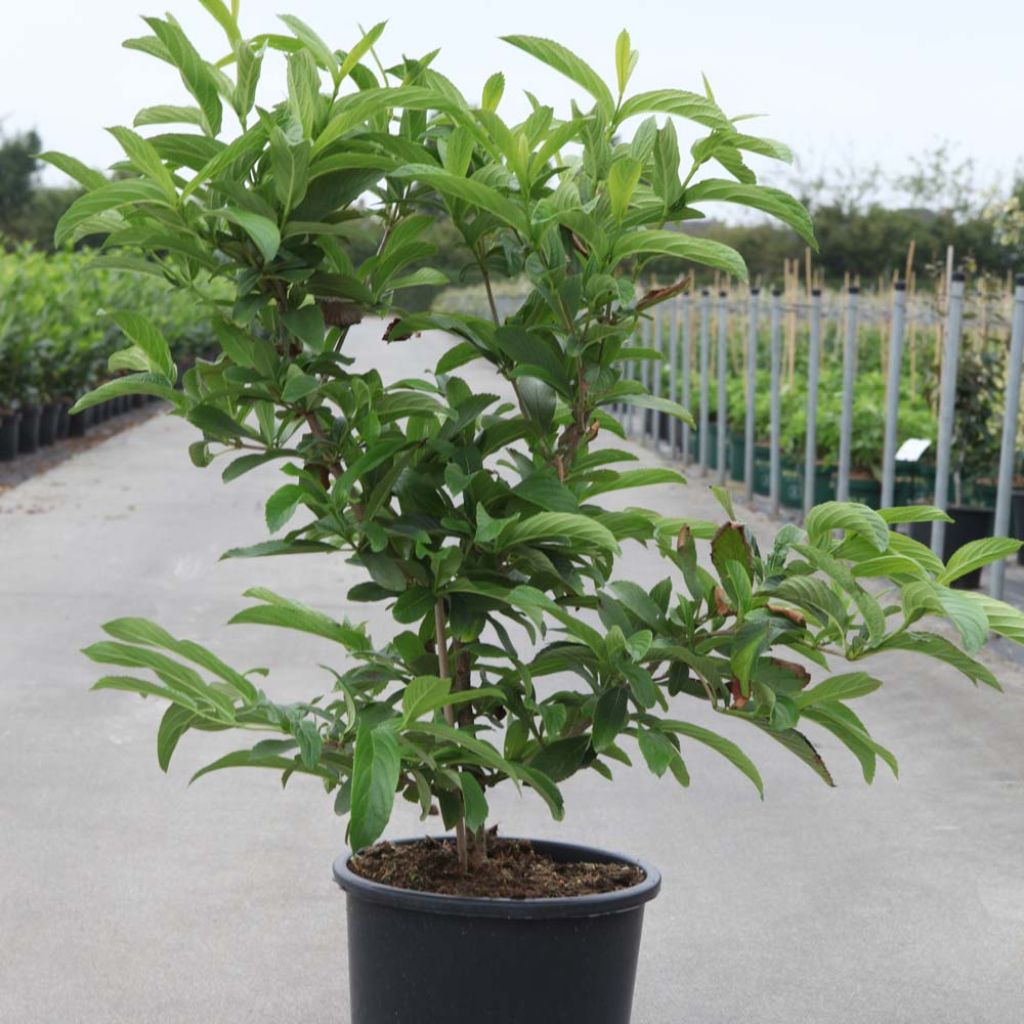

Viorne - Viburnum sieboldii Seneca
Viburnum sieboldii Seneca
Viburnum sieboldii Seneca
Siebold's Viburnum
This item cannot be shipped to the selected country
Delivery charge from €5.90
More information
Schedule delivery date,
and select date in basket
This plant carries a 24 months recovery warranty
More information
We guarantee the quality of our plants for a full growing cycle, and will replace at our expense any plant that fails to recover under normal climatic and planting conditions.
From €5.90 for pickup delivery and €6.90 for home delivery
Express home delivery from €8.90.
Does this plant fit my garden?
Set up your Plantfit profile →
Description
Viburnum sieboldii 'Seneca' is a little-known opulent bush. However, this variety is spectacular and majestic, both in terms of its stature and the size of its leaves, as well as the abundance of its flowering, followed by an extremely decorative fruiting that lasts until the heart of winter. In spring, this deciduous bush is covered with large creamy-white fragrant inflorescences, providing a dazzling spectacle in the garden. The enchantment continues in autumn, when its beautiful glossy leaves come alive with flamboyant colours. Very hardy, this bush requires space and only thrives in deep, moist, non-calcareous soils, in full sun or partial shade.
Viburnum sieboldii is a large Japanese bush belonging to the Viburnaceae family. In its natural environment, as well as in our favourable climates, the bush can quickly reach 5m (16ft) in all directions. The 'Seneca' variety, which made the species known to the European public, is an American selection introduced in 1966, with a particularly abundant flowering followed by equally interesting fructification. It is a small tree or large vigorous bush with an upright and rounded habit, reaching 5m (16ft) in all directions. Its inflorescences, 8 to 15cm (3 to 6in) wide, appear in May. They resemble certain flat-headed hydrangea flowers, composed of florets of a light green colour when they bloom, before becoming snowy white. This flowering emits a lemony scent that attracts pollinating insects. It gives way to clusters of bright pink fruits that become orange, then bright red, and finally black when ripe. Disdained by birds, they persist for a long time on the plant. When they have disappeared, the plant retains above the vegetation the very decorative red peduncles that carried them. Its deciduous foliage is composed of large ovate and leathery, dentate-edged leaves. Each leaf, sometimes reaching 15cm (6in) in length, shows a bright green colour with a shiny finish and gives off an aroma that can evoke bacon when crushed. The autumn foliage varies from yellow to orange and red.
Completely hardy, Viburnum sieboldii grows quickly and thrives in sunny or partially shaded positions, but dislikes limestone and drought. While the obvious beauty of its flowering cannot be ignored, the brilliance of its fructification surprises and blends into the colours of autumn. It can be used as a focal point to attract attention in a medium-sized garden, allowed to spread freely in a large informal hedge or to create a beautiful background in larger gardens together with large rhododendrons, locust trees, large hydrangeas (Hydrangea arborescens), and willows. Its beautiful flowers can be included in spring bouquets, accompanied by peonies and irises.
Report an error about the product description
Viburnum sieboldii Seneca in pictures
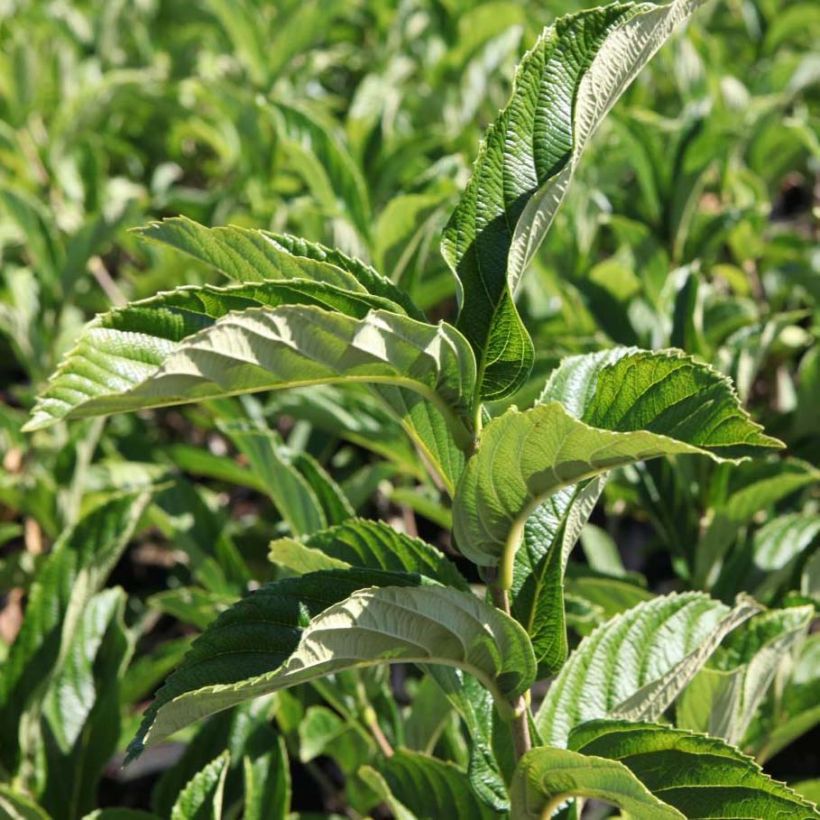

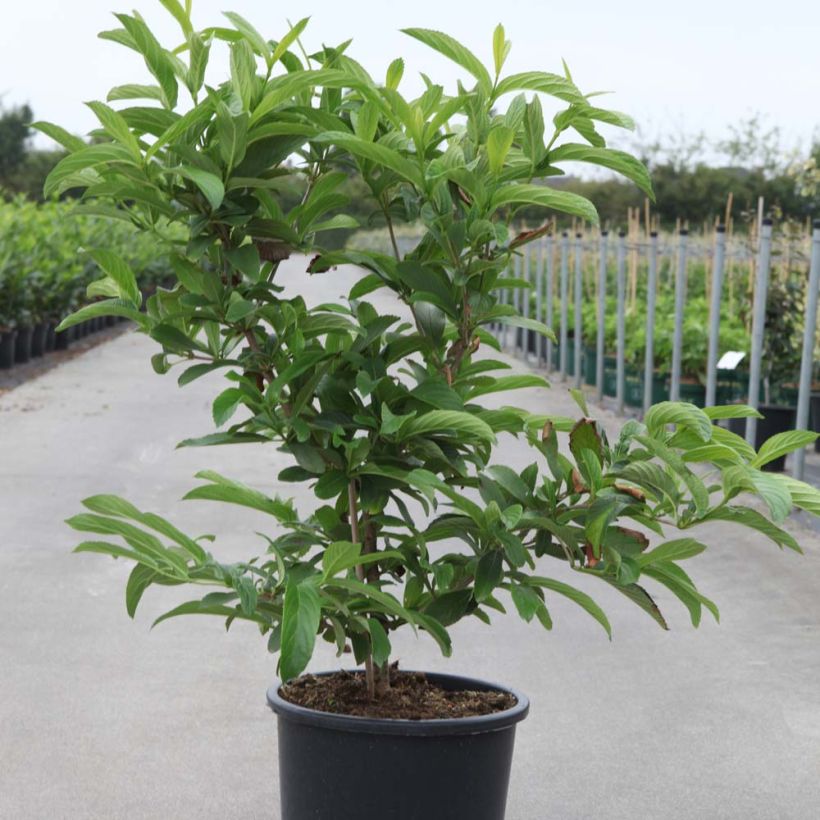

Plant habit
Flowering
Foliage
Botanical data
Viburnum
sieboldii
Seneca
Caprifoliaceae (Adoxaceae)
Siebold's Viburnum
Cultivar or hybrid
Other Viburnum
Planting and care
Viburnum sieboldii 'Seneca' thrives in sunny or partially shaded locations. Plant it in deep, moist, light, humus-rich soil and absolutely avoid calcareous and periodically dry soils. Add ericaceous soil to the planting substrate if necessary, as well as good organic matter to support the growth of this large bush. Generous watering after planting and during the first few weeks after establishment will ensure successful growth. Water during abnormally dry weather with non-calcareous water.
Planting period
Intended location
Care
This item has not been reviewed yet - be the first to leave a review about it.
Hedge shrubs
Haven't found what you were looking for?
Hardiness is the lowest winter temperature a plant can endure without suffering serious damage or even dying. However, hardiness is affected by location (a sheltered area, such as a patio), protection (winter cover) and soil type (hardiness is improved by well-drained soil).

Photo Sharing Terms & Conditions
In order to encourage gardeners to interact and share their experiences, Promesse de fleurs offers various media enabling content to be uploaded onto its Site - in particular via the ‘Photo sharing’ module.
The User agrees to refrain from:
- Posting any content that is illegal, prejudicial, insulting, racist, inciteful to hatred, revisionist, contrary to public decency, that infringes on privacy or on the privacy rights of third parties, in particular the publicity rights of persons and goods, intellectual property rights, or the right to privacy.
- Submitting content on behalf of a third party;
- Impersonate the identity of a third party and/or publish any personal information about a third party;
In general, the User undertakes to refrain from any unethical behaviour.
All Content (in particular text, comments, files, images, photos, videos, creative works, etc.), which may be subject to property or intellectual property rights, image or other private rights, shall remain the property of the User, subject to the limited rights granted by the terms of the licence granted by Promesse de fleurs as stated below. Users are at liberty to publish or not to publish such Content on the Site, notably via the ‘Photo Sharing’ facility, and accept that this Content shall be made public and freely accessible, notably on the Internet.
Users further acknowledge, undertake to have ,and guarantee that they hold all necessary rights and permissions to publish such material on the Site, in particular with regard to the legislation in force pertaining to any privacy, property, intellectual property, image, or contractual rights, or rights of any other nature. By publishing such Content on the Site, Users acknowledge accepting full liability as publishers of the Content within the meaning of the law, and grant Promesse de fleurs, free of charge, an inclusive, worldwide licence for the said Content for the entire duration of its publication, including all reproduction, representation, up/downloading, displaying, performing, transmission, and storage rights.
Users also grant permission for their name to be linked to the Content and accept that this link may not always be made available.
By engaging in posting material, Users consent to their Content becoming automatically accessible on the Internet, in particular on other sites and/or blogs and/or web pages of the Promesse de fleurs site, including in particular social pages and the Promesse de fleurs catalogue.
Users may secure the removal of entrusted content free of charge by issuing a simple request via our contact form.
The flowering period indicated on our website applies to countries and regions located in USDA zone 8 (France, the United Kingdom, Ireland, the Netherlands, etc.)
It will vary according to where you live:
- In zones 9 to 10 (Italy, Spain, Greece, etc.), flowering will occur about 2 to 4 weeks earlier.
- In zones 6 to 7 (Germany, Poland, Slovenia, and lower mountainous regions), flowering will be delayed by 2 to 3 weeks.
- In zone 5 (Central Europe, Scandinavia), blooming will be delayed by 3 to 5 weeks.
In temperate climates, pruning of spring-flowering shrubs (forsythia, spireas, etc.) should be done just after flowering.
Pruning of summer-flowering shrubs (Indian Lilac, Perovskia, etc.) can be done in winter or spring.
In cold regions as well as with frost-sensitive plants, avoid pruning too early when severe frosts may still occur.
The planting period indicated on our website applies to countries and regions located in USDA zone 8 (France, United Kingdom, Ireland, Netherlands).
It will vary according to where you live:
- In Mediterranean zones (Marseille, Madrid, Milan, etc.), autumn and winter are the best planting periods.
- In continental zones (Strasbourg, Munich, Vienna, etc.), delay planting by 2 to 3 weeks in spring and bring it forward by 2 to 4 weeks in autumn.
- In mountainous regions (the Alps, Pyrenees, Carpathians, etc.), it is best to plant in late spring (May-June) or late summer (August-September).
The harvesting period indicated on our website applies to countries and regions in USDA zone 8 (France, England, Ireland, the Netherlands).
In colder areas (Scandinavia, Poland, Austria...) fruit and vegetable harvests are likely to be delayed by 3-4 weeks.
In warmer areas (Italy, Spain, Greece, etc.), harvesting will probably take place earlier, depending on weather conditions.
The sowing periods indicated on our website apply to countries and regions within USDA Zone 8 (France, UK, Ireland, Netherlands).
In colder areas (Scandinavia, Poland, Austria...), delay any outdoor sowing by 3-4 weeks, or sow under glass.
In warmer climes (Italy, Spain, Greece, etc.), bring outdoor sowing forward by a few weeks.

































